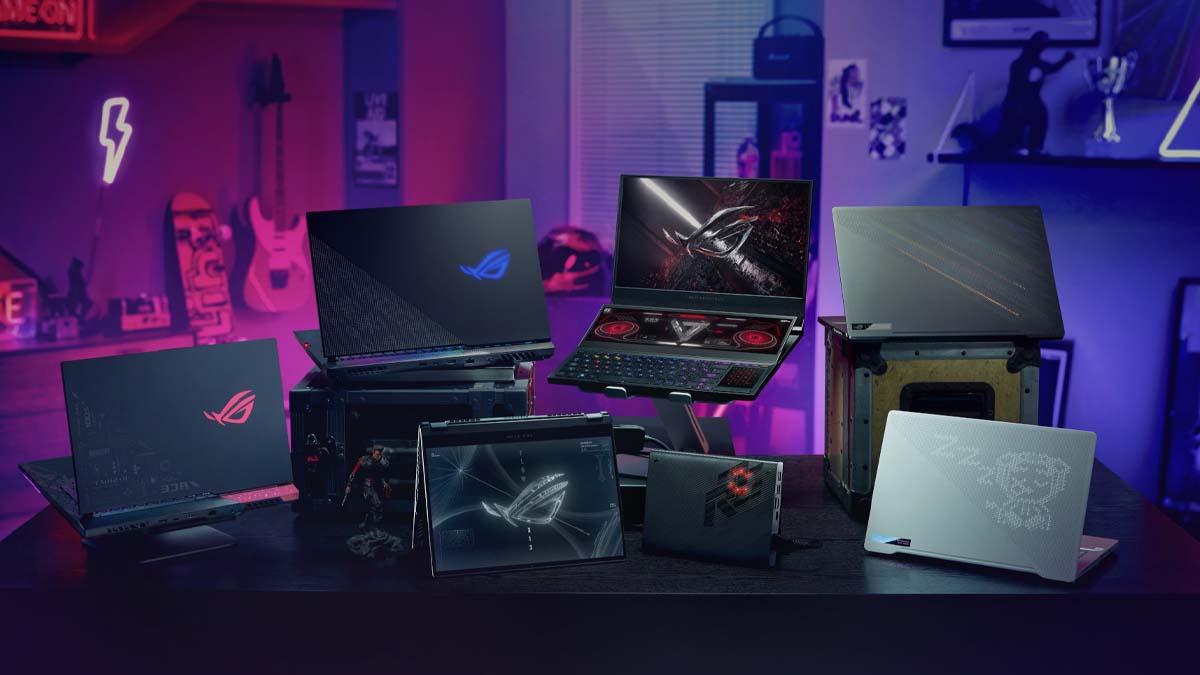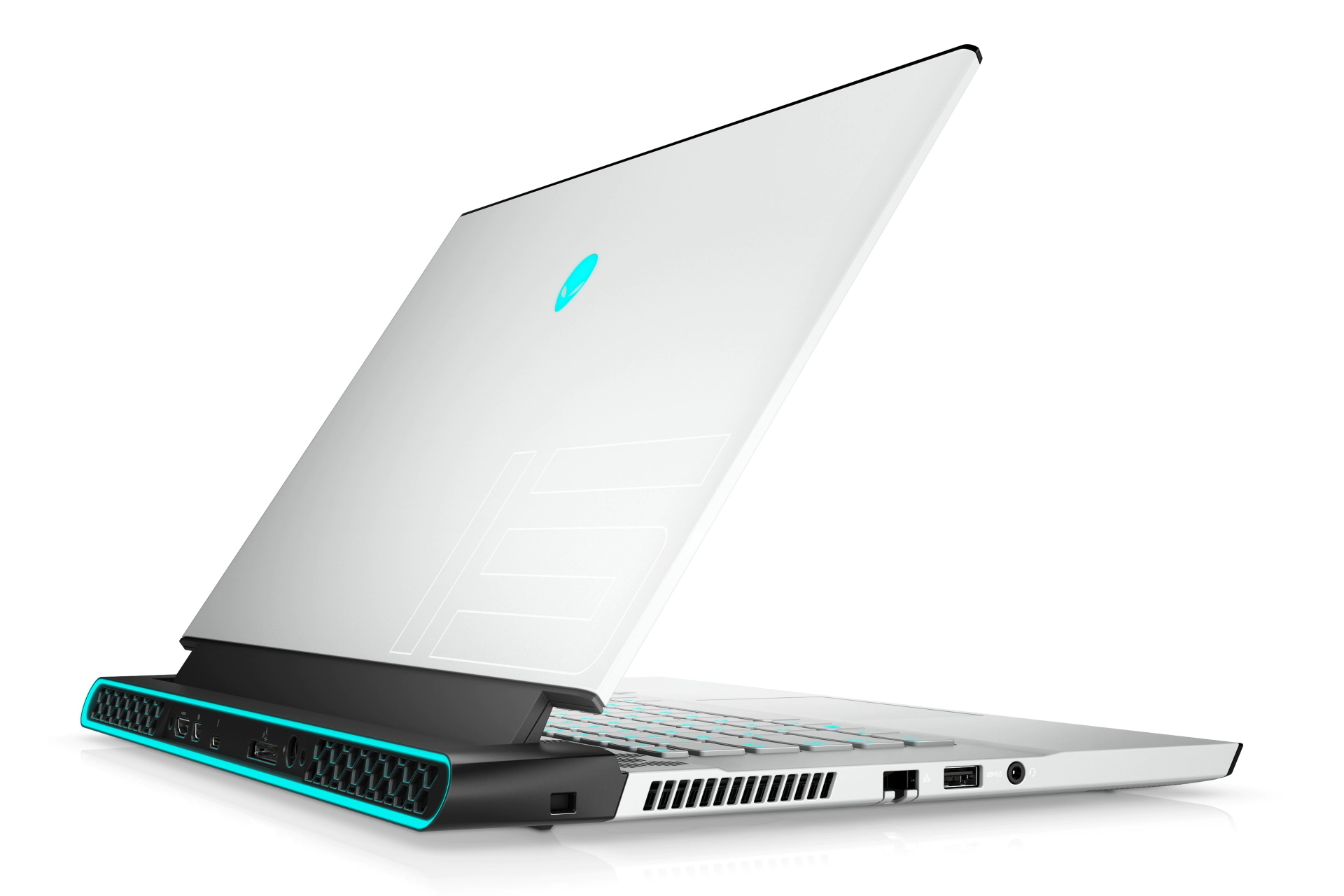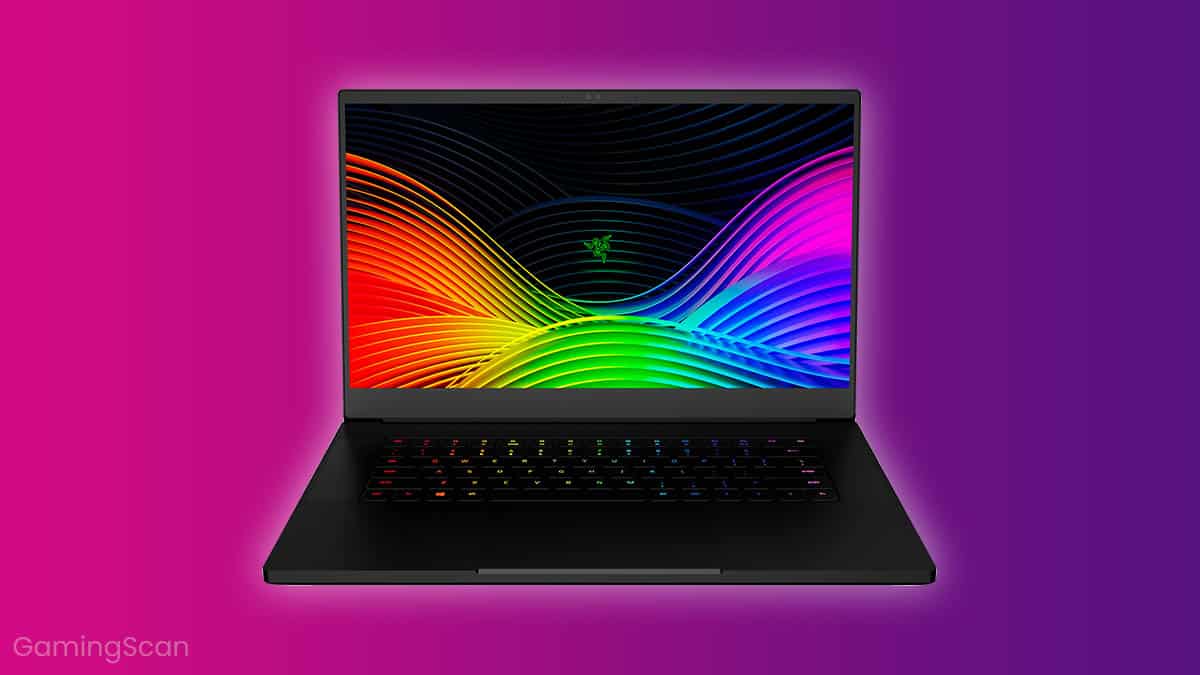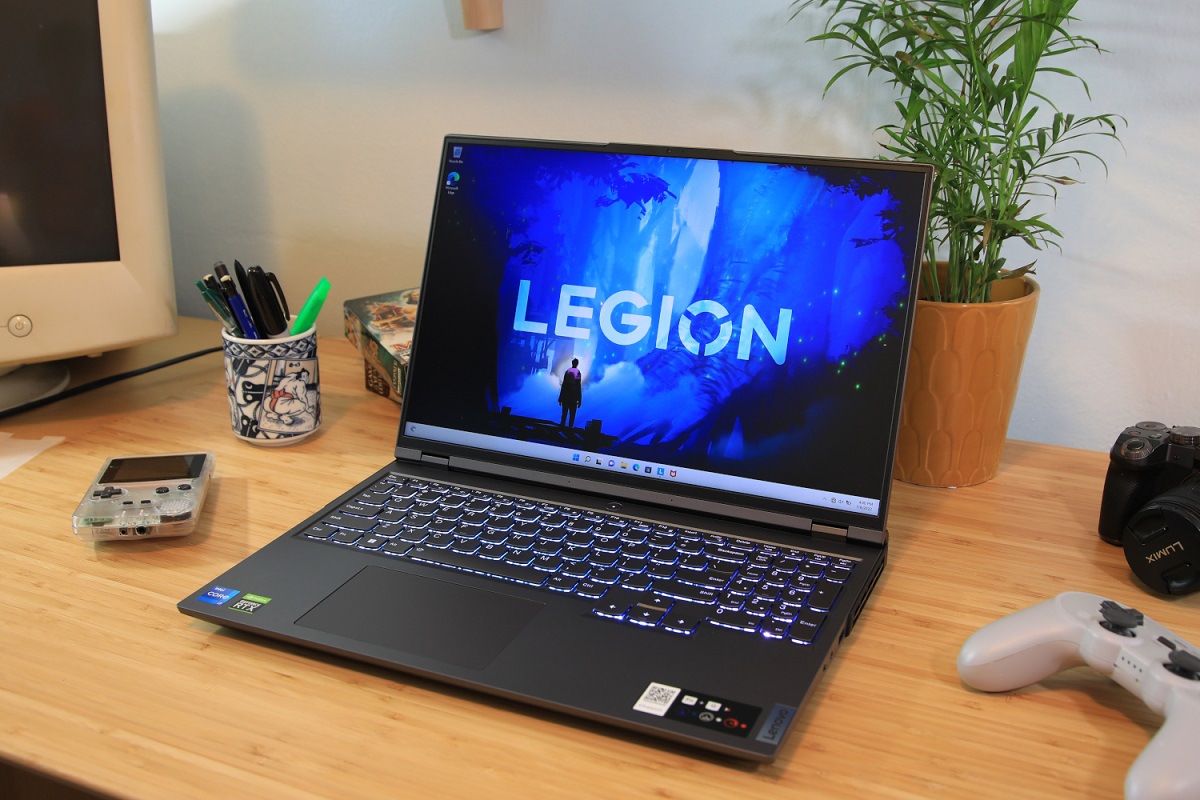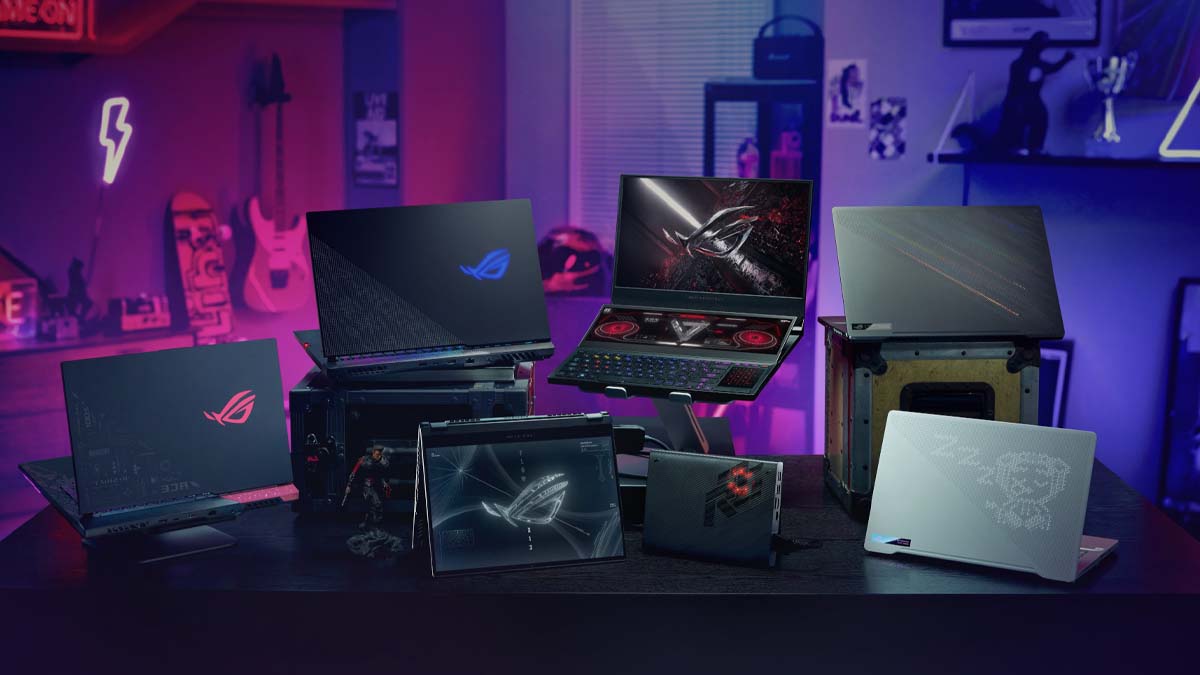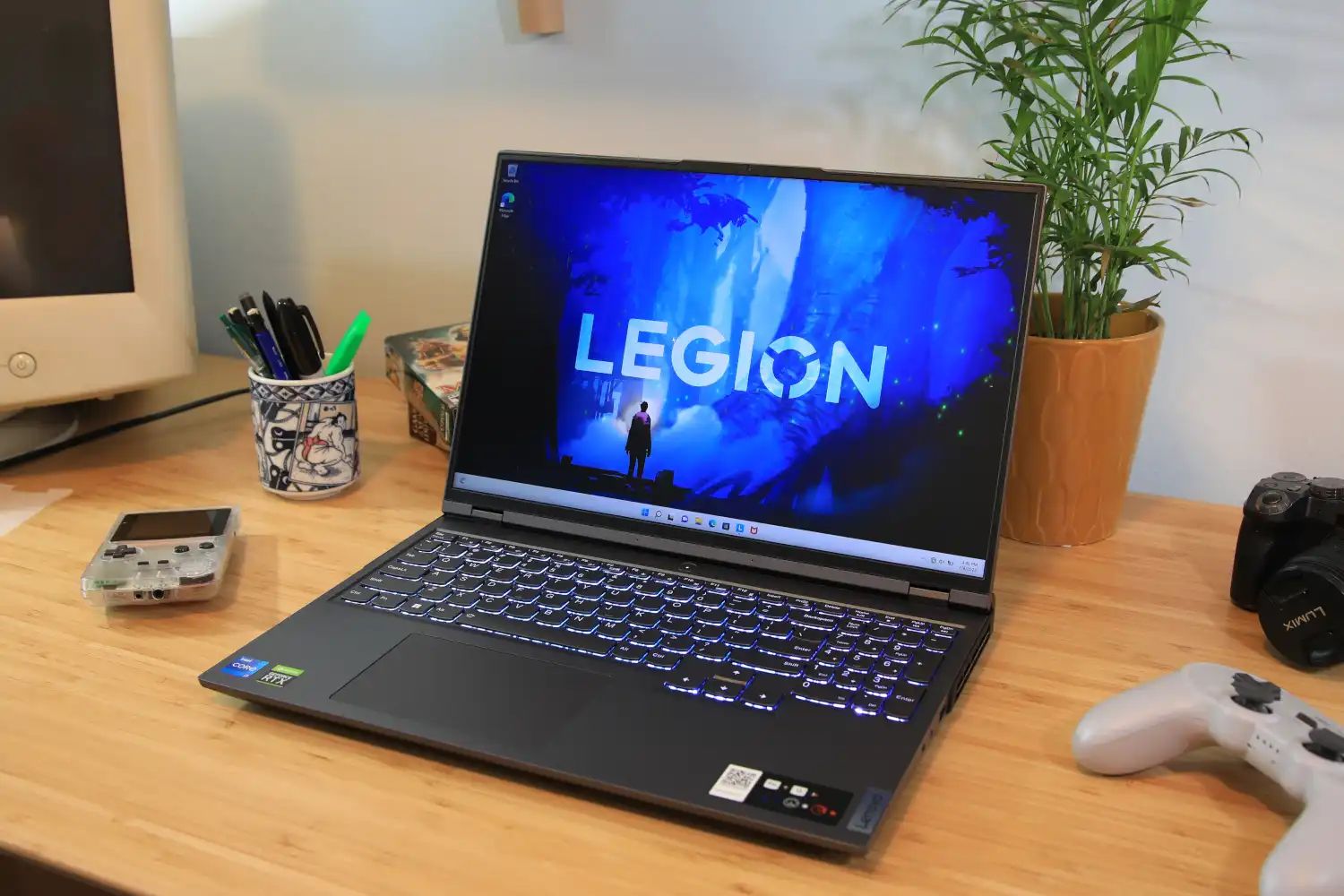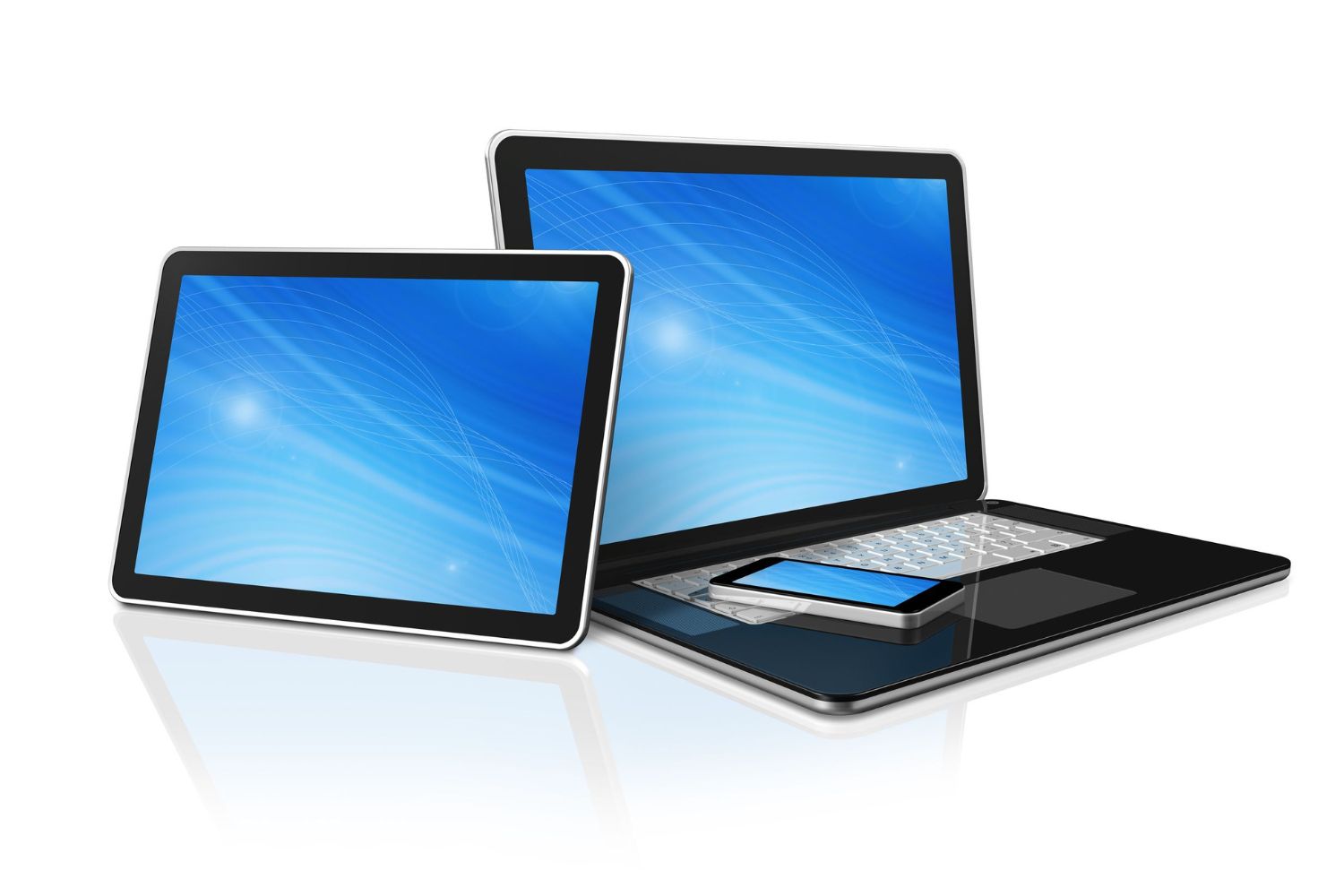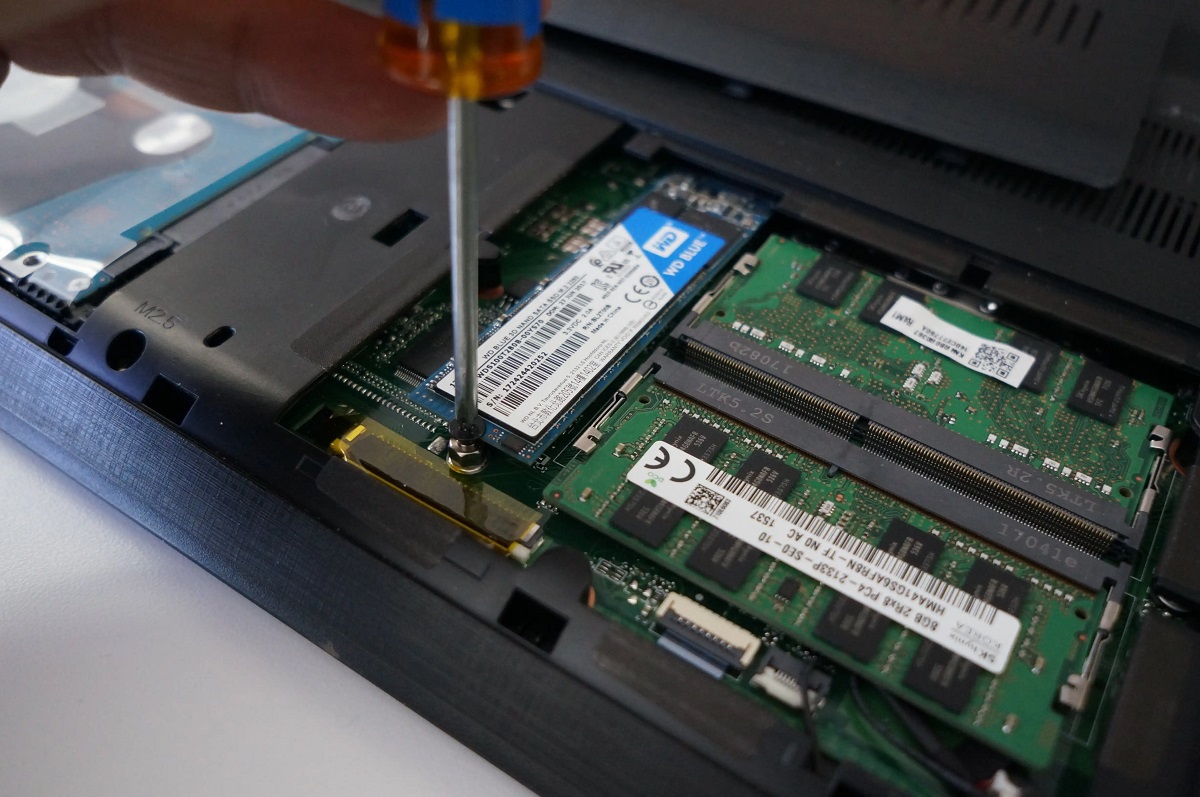Importance of Taking Care of Your Gaming Laptop
Your gaming laptop is not just an ordinary piece of technology; it is your gateway to immersive gaming experiences and countless hours of entertainment. To ensure that it continues to perform optimally and lasts for years to come, it is crucial to take proper care of it. By following a few simple maintenance steps, you can extend the lifespan of your gaming laptop and keep it running smoothly.
One of the most important aspects of taking care of your gaming laptop is regular cleaning and dusting. Over time, dust and debris can accumulate on the keyboard, intake vents, and cooling fans, causing them to become clogged and hindering proper airflow. This can lead to overheating and performance issues. By using compressed air or a soft brush, you can remove the dust and keep your laptop clean.
In addition to cleaning, keeping your laptop cool is essential. Gaming laptops generate a significant amount of heat, and if not properly cooled, this can lead to overheating and potential hardware damage. Ensure that your laptop is placed on a hard, flat surface that allows for proper air circulation. Consider using a laptop cooling pad to further enhance the cooling efficiency.
Optimizing battery life is another crucial aspect of taking care of your gaming laptop. Most gaming laptops are equipped with high-performance batteries that can provide hours of uninterrupted gaming. However, improper usage and charging habits can decrease the battery’s overall lifespan. To maximize battery life, avoid keeping your laptop plugged in all the time and allow the battery to discharge partially before recharging.
Protecting your gaming laptop from viruses and malware is essential for its smooth operation. Install a reputable antivirus program and perform regular scans to detect and remove any potential threats. Additionally, be cautious when downloading and installing software or visiting unfamiliar websites to avoid inadvertently infecting your laptop.
Regular software updates are crucial for maintaining the security and performance of your gaming laptop. Keep your operating system, drivers, and gaming software up to date to benefit from the latest bug fixes and improvements. These updates often include optimizations that can enhance your gaming experience and address any compatibility issues.
Managing storage space is another important consideration. Gaming laptops typically come with limited storage capacity, and running out of space can hinder performance and slow down your system. Regularly delete unnecessary files, uninstall unused programs, and consider investing in an external hard drive for additional storage options.
Avoiding overclocking is recommended, as it puts additional stress on your laptop’s hardware and can lead to accelerated wear and tear. While overclocking may provide a temporary boost in performance, it significantly reduces the overall lifespan of your laptop.
Properly shutting down your laptop after each use is essential. Avoid shutting it down abruptly or putting it to sleep mode for extended periods, as this can lead to system errors and data corruption. Take the time to properly power down your laptop to ensure a fresh start the next time you use it.
Lastly, consider investing in an external monitor and a proper keyboard for extended gaming sessions. These peripherals can significantly improve your gaming experience, reduce strain on your laptop, and allow for more comfortable gameplay.
By following these maintenance tips and taking care of your gaming laptop, you can ensure its longevity, optimal performance, and an enhanced gaming experience for years to come.
Cleaning and Dusting Your Laptop
Regularly cleaning and dusting your gaming laptop is essential for keeping it in optimal condition and preventing performance issues. Over time, dust and debris can accumulate on your laptop’s keyboard, intake vents, and cooling fans, restricting airflow and causing overheating. By following a few simple steps, you can ensure that your laptop remains clean and dust-free.
Start by powering off your laptop and disconnecting it from any power sources. This will ensure your safety and prevent any damage to the laptop during the cleaning process.
Next, use a soft, lint-free cloth or a microfiber cloth to gently wipe down the exterior surfaces of your laptop. This will remove any fingerprints, smudges, or dirt that may have accumulated over time. Be careful not to apply too much pressure or use any abrasive cleaning agents that could potentially damage the laptop’s finish.
Moving on to the keyboard, use a can of compressed air or a soft brush to remove any dust or debris that may have settled between the keys. Hold the can of compressed air upright and spray short bursts of air between the keys. If you’re using a brush, gently brush the keys in a circular motion to dislodge any dirt. To remove any stubborn stains or grime, lightly dampen a cloth with a small amount of isopropyl alcohol and gently wipe the keys. Be sure to wring out the cloth thoroughly and avoid excessive moisture.
After cleaning the keyboard, turn your attention to the intake vents and cooling fans. These components are essential to keeping your laptop cool during intense gaming sessions. Use the compressed air can to blow away any dust or debris that may have accumulated in these areas. Hold the can at a slight angle to prevent any moisture from entering the laptop. It’s essential to perform this step regularly, as clogged vents and fans can lead to overheating and reduced performance.
Once you have cleaned the keyboard, intake vents, and cooling fans, you can reconnect the laptop to its power source and turn it back on. Take a moment to observe if there are any noticeable changes in the performance or temperature of your laptop. If you still experience overheating or performance issues, it may be necessary to seek professional assistance or contact the manufacturer for further guidance.
It is recommended to establish a regular cleaning routine for your gaming laptop. Depending on your usage patterns and the environment in which you use your laptop, it may be necessary to clean it every few weeks or once a month. By doing so, you can prevent dust buildup and prolong the lifespan of your laptop.
Remember that proper cleaning and dusting techniques are essential for maintaining the integrity of your gaming laptop. Always refer to the manufacturer’s guidelines and recommendations when cleaning your specific laptop model to ensure you are taking the appropriate measures.
Keeping Your Laptop Cool
One of the most important factors in maintaining the performance and longevity of your gaming laptop is keeping it cool. Gaming laptops are notorious for generating a significant amount of heat, and if not properly managed, this can lead to overheating and potential damage to your hardware components. By implementing a few cooling techniques, you can ensure that your laptop stays cool, even during intense gaming sessions.
First and foremost, it is crucial to provide your laptop with proper ventilation. Make sure to place your laptop on a hard, flat surface that allows for adequate airflow. Avoid using it on soft surfaces like beds or cushions, as they can block the vents and cause heat to build up. Additionally, keeping your laptop elevated with a laptop stand or cooling pad can help improve airflow and prevent overheating.
Investing in a laptop cooling pad can significantly enhance the cooling efficiency of your gaming laptop. These pads come with built-in fans that create additional airflow around the laptop. The fans help dissipate heat and maintain a cooler operating temperature. Look for a cooling pad that is specifically designed for gaming laptops and has adjustable fan speeds to suit your cooling needs.
Another effective way to keep your laptop cool is by cleaning the cooling system regularly. Over time, dust and debris can accumulate in the cooling fans and vents, reducing airflow and causing your laptop to overheat. Use a can of compressed air to blow away any dust or debris that may have settled in these areas. Be sure to hold the can upright and use short, controlled bursts to avoid damaging the fans.
Consider adjusting the power settings on your laptop to help manage heat generation. By setting your laptop to a power-saving mode or reducing the brightness of the screen, you can decrease the workload on your laptop’s components, thereby reducing heat output. It is also recommended to close any unnecessary background processes or applications that may put additional strain on your laptop’s resources and generate more heat.
Monitoring the internal temperature of your laptop is essential to identify any potential overheating issues. Many software applications are available that allow you to monitor the temperature of various components in real-time. If you notice that your laptop is consistently running at high temperatures, it may be a sign of a cooling problem. In such cases, it is advisable to seek professional help or contact the manufacturer for assistance.
Lastly, avoid using your laptop in hot or humid environments. High temperatures and humidity can exacerbate heat-related issues and increase the risk of your laptop overheating. If you live in a warm climate or are using your laptop in a non-air-conditioned space, consider using a portable fan or an air-conditioned room to help keep the ambient temperature down.
By implementing these cooling techniques, you can effectively manage the heat generated by your gaming laptop and ensure its optimal performance and longevity. Remember, heat is the biggest enemy of electronic devices, so it’s important to prioritize keeping your laptop cool to protect your investment.
Optimizing Battery Life
When it comes to gaming laptops, battery life is a crucial factor to consider. To ensure that you can enjoy uninterrupted gaming sessions, it is essential to optimize the battery life of your laptop. By following a few simple tips, you can maximize the battery’s efficiency and prolong its overall lifespan.
One of the most important practices for optimizing battery life is to avoid keeping your laptop plugged in all the time. While it may be tempting to keep your laptop constantly connected to a power source, this can actually reduce the battery’s capacity over time. It is recommended to allow the battery to discharge partially before recharging it. Aim to keep the battery level between 20% and 80% to maintain its health and longevity.
Adjusting the power settings on your laptop can also significantly impact the battery life. Lowering the screen brightness, putting the laptop to sleep or hibernate when not in use, and disabling unnecessary background processes can help conserve battery power. You can customize these settings in the power options or energy management settings on your laptop.
Unplugging any peripherals or accessories that are not in use can help reduce the power drain on your laptop’s battery. USB devices, external hard drives, and gaming controllers can consume energy even when not actively being used. It is advisable to disconnect them when not needed to conserve battery life.
Using power-saving modes or battery optimization software can help extend the battery life of your gaming laptop. Many operating systems have built-in power-saving modes that limit the performance of your laptop’s components to conserve energy. Additionally, there are third-party software applications available that can automatically adjust power settings based on your usage patterns and optimize battery life accordingly.
Regularly updating your laptop’s software and firmware can also contribute to better battery life. Manufacturers often release updates that include power optimizations and improvements, which can help reduce power consumption. Keeping your operating system, drivers, and gaming software up to date ensures that you are benefitting from the latest advancements and enhancements.
If you primarily use your gaming laptop for gaming sessions that require maximum performance, it may be worth considering purchasing an additional battery or a portable power bank. These accessories provide additional power backup and can be a convenient option when you need to game on the go without worrying about battery life.
Lastly, it is important to note that every battery has a limited lifespan and will eventually need to be replaced. If you find that your battery is no longer holding a charge as effectively as before, it may be time to invest in a new one. It is advisable to purchase batteries from reputable sources to ensure compatibility and performance.
By implementing these optimization techniques, you can make the most of your gaming laptop’s battery life. Remember to strike a balance between gaming performance and battery conservation to enjoy an extended gaming experience without compromising the health and longevity of your laptop’s battery.
Protecting Your Laptop from Viruses and Malware
Keeping your gaming laptop protected from viruses and malware is crucial for maintaining its performance and ensuring the safety of your personal data. Viruses and malware can not only disrupt your gaming experience but also compromise your personal information or lead to system instability. By implementing a few precautionary measures, you can effectively protect your laptop from these potential threats.
First and foremost, it is essential to install a reputable antivirus program on your laptop. Antivirus software provides real-time protection against viruses, malware, and other potential threats. Ensure that your antivirus program is up to date and configured to perform regular scans and updates automatically. This helps to detect and remove any malicious software that may have found its way onto your system.
Exercise caution when downloading and installing software or files from the internet. Stick to trusted sources and avoid downloading files from unknown or suspicious websites. Always scan files or programs before opening or installing them on your laptop, even if they appear to be from a reliable source.
Keep your operating system and all installed software up to date by regularly installing the latest security patches and updates. Software updates frequently include important security fixes that address vulnerabilities and protect your laptop from potential threats. Enable automatic updates whenever possible to ensure that your laptop is always up to date with the latest security enhancements.
Be mindful of phishing attempts and suspicious emails. Phishing is a common method used by cybercriminals to trick users into revealing sensitive information. Avoid clicking on unknown or suspicious links in emails and be cautious of emails that ask for personal information or financial details. When in doubt, verify the legitimacy of the sender before taking any action.
It is recommended to enable your laptop’s built-in firewall or install a third-party firewall software. Firewalls act as a barrier between your laptop and potential threats by monitoring incoming and outgoing network traffic. They help prevent unauthorized access and provide an additional layer of protection against malicious software.
Regularly create backups of your important files and data. This ensures that even if your laptop is infected with malware or becomes compromised, you can restore your data from a secure backup source. Cloud storage solutions or external hard drives are convenient options for backing up your files regularly.
Exercise caution when utilizing public Wi-Fi networks, especially for online gaming. Public networks can be a breeding ground for hackers and cybercriminals. Avoid accessing sensitive information, such as banking or personal accounts, while connected to public Wi-Fi. If gaming online, consider using a virtual private network (VPN) to encrypt your connection and add an extra layer of security.
If you suspect that your laptop may be infected with malware or viruses, take immediate action. Run a thorough scan with your antivirus software and follow the recommendations for removing or quarantining any detected threats. If the situation persists or worsens, it is advisable to seek professional assistance or contact the manufacturer for further guidance.
By implementing these preventive measures and staying vigilant, you can greatly reduce the risk of viruses and malware infecting your gaming laptop. Protecting your laptop from these threats ensures a safer, smoother gaming experience and safeguards your personal data and information.
Regular Software Updates
Regularly updating the software on your gaming laptop is crucial for maintaining optimal performance, security, and compatibility. Software updates often include bug fixes, security patches, and performance enhancements that can significantly improve your gaming experience. Neglecting to update your software can leave your laptop vulnerable to security threats and may result in compatibility issues with newer games or applications. By staying on top of software updates, you can ensure that your gaming laptop remains up to date and protected.
Operating system updates are among the most important software updates for your laptop. Manufacturers regularly release updates to address security vulnerabilities, improve stability, and introduce new features. These updates are essential for protecting your laptop from the latest threats and ensuring that it runs smoothly. Set your laptop to automatically install operating system updates or check for updates manually on a regular basis.
In addition to the operating system, it is crucial to keep your drivers up to date. Drivers are pieces of software that facilitate communication between the operating system and hardware components of your laptop. Outdated or incompatible drivers can cause performance issues, graphical glitches, and even system crashes. Visit the manufacturer’s website or use driver update software to check for and install the latest driver updates for your hardware components, such as graphics cards, audio devices, and network adapters.
Gaming software and applications also require regular updates to ensure optimal performance and compatibility. Game developers often release updates that fix bugs, introduce new features, or address security vulnerabilities. Keep your gaming library up to date by regularly checking for updates through the game launcher or digital distribution platforms like Steam or Origin.
It is worth noting that updating your software can sometimes lead to temporary compatibility issues with certain games or applications. In such cases, it is advisable to check the developer’s website or forums for any reported issues or recommended workarounds. If you encounter compatibility problems, you may need to roll back the software update, seek assistance from the game’s support team, or wait for a patch to resolve the compatibility issue.
Software update notifications can sometimes be intrusive, especially when you’re in the middle of a gaming session. Consider scheduling software updates to occur during periods when you are least likely to be actively using your laptop. This way, you can avoid interruptions and update your software at your convenience.
Remember, software updates not only provide enhancements and security fixes but can also optimize performance and introduce new features. By keeping your gaming laptop’s software up to date, you can ensure that you are getting the most out of your gaming experience while staying protected against potential security threats.
Managing Storage Space
Managing the storage space on your gaming laptop is essential for maintaining optimal performance and ensuring that you have enough capacity to store your games, files, and applications. Running out of storage space can lead to sluggish performance, difficulty installing new games or software, and an overall frustrating gaming experience. By implementing a few storage management techniques, you can effectively manage your laptop’s storage space and keep it running smoothly.
Regularly declutter your laptop by removing unnecessary files, applications, and games. Over time, we tend to accumulate files that are no longer needed, taking up valuable storage space. Delete any duplicate files, old documents, or unused software to free up storage space. Additionally, uninstall games that you no longer play or have completed to create more room for new games.
Consider transferring large files, such as videos or photos, to external storage devices or cloud storage services. External hard drives or USB flash drives can serve as additional storage options, allowing you to offload files that are not frequently accessed. Cloud storage services offer the advantage of accessing your files from any device with an internet connection.
Use disk cleanup tools or storage optimization software to identify and remove unnecessary files that are taking up space on your laptop’s hard drive. These tools can help you discover temporary files, system caches, and other items that can be safely deleted to free up storage space. It is recommended to run disk cleanup regularly to maintain an efficient storage system.
If you have limited SSD storage on your gaming laptop, consider moving less-demanding games or applications to an external hard drive or an additional internal hard drive. SSDs are faster than traditional hard drives but often come with smaller storage capacities. By offloading less frequently played games or applications to external storage, you can free up space on your SSD for games that require faster loading times.
When downloading new games or software, be mindful of the installation location. Some games or applications allow you to choose where to install them. Select a drive with sufficient space, preferably your fastest drive (such as an SSD), to maintain optimal performance. Allocating adequate storage space from the start can help prevent running out of space later on.
Regularly check your Downloads folder and clear it out, as it can quickly accumulate files that are no longer needed. This folder often contains downloaded files, installation files, and temporary files associated with software updates. Deleting these files regularly can help free up space on your laptop’s hard drive.
Another useful strategy for managing storage space is to utilize disk compression tools or archiving software. These tools can compress files and folders to save a significant amount of space without compromising accessibility. Archiving software can also compress large files or folders into a single compressed file, making it easier to store and manage.
It is important to strike a balance between freeing up storage space and ensuring that you have easy access to the files and games you need. Avoid deleting files that you might need in the future or uninstalling games that you frequently play. Regularly evaluating your storage usage and implementing these storage management techniques will help keep your gaming laptop running smoothly and ensure that you have enough space for your growing game library.
Using a Laptop Cooling Pad
A laptop cooling pad can be a valuable accessory for gaming laptops, as it helps to prevent overheating and keeps your laptop running at optimal temperatures. Gaming laptops are known to generate a significant amount of heat during intense gaming sessions, and if not properly cooled, this can lead to performance issues and potential hardware damage. Using a cooling pad can effectively enhance the cooling efficiency of your laptop and provide a more comfortable gaming experience.
A laptop cooling pad is a device that sits underneath your laptop and provides additional airflow to help dissipate heat. It typically consists of one or more fans that draw in cool air and direct it toward the underside of your laptop. The fans create a continuous flow of fresh air, preventing hot air from becoming trapped underneath and ensuring that your laptop’s components stay cool.
When selecting a laptop cooling pad, consider factors such as size, fan placement, and adjustability. Choose a cooling pad that is suitable for the size of your gaming laptop, ensuring that it fits properly and allows for proper airflow. Opt for a cooling pad with fans strategically placed to align with your laptop’s intake vents for maximum cooling effectiveness.
Adjustability is another important aspect to consider. Some cooling pads offer adjustable fan speeds, allowing you to customize the airflow based on your cooling needs. Adjustable height settings can also improve your gaming experience by providing a more ergonomic typing and viewing angle.
Using a laptop cooling pad is straightforward. Simply place your gaming laptop on top of the cooling pad, ensuring that the cooling fans align with the laptop’s intake vents. Connect the cooling pad to a USB port on your laptop to provide power to the fans. Once connected, the cooling pad will start circulating air to keep your laptop cool.
Using a cooling pad helps to prevent overheating, which can extend the lifespan of your gaming laptop. Overheating can cause performance issues, system instability, and even permanent hardware damage. By maintaining optimal temperatures, a cooling pad can help prevent these problems and ensure that your laptop can handle demanding gaming sessions without overheating.
In addition to cooling your laptop, a cooling pad can also provide added comfort during gaming sessions. It elevates your laptop, allowing for better airflow and reducing strain on your wrists and neck. The improved ergonomics provided by the cooling pad can enhance your gaming experience and minimize the risk of discomfort or injuries associated with prolonged gaming sessions.
It’s important to note that a laptop cooling pad is not a substitute for proper laptop care and maintenance. Regular cleaning, dusting, and ensuring proper ventilation are still essential practices. However, using a cooling pad can serve as a valuable supplement to these efforts and provide an extra layer of cooling.
By investing in a quality laptop cooling pad and incorporating it into your gaming setup, you can effectively manage and control the heat generated by your gaming laptop. Keeping your laptop cool not only improves performance but also extends the lifespan of the hardware, ensuring that you can enjoy uninterrupted gaming for years to come.
Avoiding Overclocking
Overclocking is a practice that involves pushing your gaming laptop’s hardware components, such as the CPU or GPU, beyond their factory-set limits to achieve higher performance. While overclocking can lead to temporary performance boosts, it comes with certain risks and drawbacks that make it advisable to avoid this practice for the average user.
One of the main risks of overclocking is increased heat generation. When you overclock your laptop’s components, they operate at higher frequencies and voltages, resulting in increased power consumption and heat production. This can lead to higher temperatures, which may surpass safe operating limits and potentially damage your laptop’s hardware. Over time, consistent overheating can cause reduced performance, system instability, and even permanent damage to the CPU or GPU.
Overclocking can also void your laptop’s warranty. Most manufacturers consider overclocking as a form of “unauthorized” modification and explicitly state that any damage caused by overclocking is not covered under warranty. This means that if something goes wrong while overclocking, you will be responsible for the repair costs.
In addition to the risks involved, overclocking can also have a negative impact on your laptop’s battery life. Overclocked components consume more power, which leads to increased battery drain. If you rely on your gaming laptop for portable gaming, overclocking may significantly reduce the time you can use the laptop on battery power alone.
Overclocking can also introduce stability issues and compatibility problems. Each laptop and its components are designed to operate within specific limits, and pushing them beyond these limits can introduce instability in the system. It may result in frequent crashes, blue screens of death, or software malfunctions. Furthermore, some games or applications may not function properly on an overclocked system, leading to unexpected glitches or incompatibility.
Another factor to consider is the complexity and technical knowledge required for successful overclocking. It involves adjusting various settings in the BIOS and testing the stability of the overclocked system. Incorrect settings or lack of proper understanding can result in system failures or degraded performance. For users who are not experienced or knowledgeable about the intricacies of overclocking, it is best to avoid this practice altogether.
It is worth mentioning that some gaming laptops come with pre-overclocked components or offer software utilities from the manufacturer that allow for easy and controlled overclocking. However, even with these options, caution should be exercised, and proper cooling solutions should be in place to mitigate the risks.
In summary, while overclocking can provide a temporary performance boost, the risks and drawbacks outweigh the benefits for most users. Overheating, reduced battery life, warranty voidance, stability issues, and compatibility problems are all potential consequences of overclocking. It’s best to prioritize the long-term health and stability of your gaming laptop by avoiding overclocking and instead investing in a high-quality laptop with adequate performance for your gaming needs.
Properly Shutting Down Your Laptop
Properly shutting down your gaming laptop is an important practice that helps to maintain the performance and longevity of your device. Closing your laptop abruptly or putting it to sleep mode without shut down can lead to system errors, data corruption, and potential hardware damage. By following a few simple steps, you can ensure a smooth and safe shutdown process for your laptop.
The first step in properly shutting down your laptop is to close all open applications and save any unsaved work. This ensures that all your data is properly saved and prevents loss or corruption of files. Take the time to organize your work and close all unnecessary applications before proceeding with the shutdown process.
Next, click on the “Start” menu or the equivalent button in your operating system’s user interface. Look for the power options and select “Shutdown.” This initiates the shutdown process and safely terminates all processes and services running on your laptop. It is important to avoid using the physical power button or keyboard shortcuts to shut down your laptop, as this can result in an improper shutdown.
Wait for your laptop to complete the shutdown process before closing the lid or disconnecting the power supply. Depending on your laptop’s configuration and the number of applications running, the shutdown process may take a few seconds to a minute. Patience is key during this step, as it ensures that all processes are properly terminated and any pending updates or background tasks are completed.
Once the shutdown process is complete, you can close the lid of your laptop or disconnect the power supply if necessary. However, it is recommended to keep the power supply connected whenever possible, especially if you plan to use your laptop for an extended period without shutting it down.
Properly shutting down your laptop on a regular basis is important for several reasons. Firstly, it helps to clear the system’s cache and temporary files, ensuring that your laptop starts fresh the next time you power it on. Secondly, it prevents the accumulation of unnecessary background processes and services that can slow down your laptop over time. Lastly, a proper shutdown allows your laptop to undergo necessary system updates and maintenance tasks that contribute to its overall stability and performance.
It is worth noting that if you need to step away from your laptop or put it into standby mode for shorter periods, you can utilize sleep or hibernate modes. Sleep mode allows your laptop to enter a low-power state while preserving the current session and open applications. Hibernate mode saves the current state to the hard drive and powers off the laptop, enabling you to resume your work from where you left off upon starting up again.
By following these proper shutdown practices, you can ensure the overall health and stability of your gaming laptop. Regularly shutting down your laptop avoids potential issues, improves performance, and extends the lifespan of your device, providing you with a seamless and enjoyable gaming experience.
External Monitor and Proper Keyboard Usage
When it comes to gaming on your laptop, using an external monitor and a proper keyboard can greatly enhance your gaming experience and provide added comfort. While gaming laptops come with built-in displays and keyboards, they often have limitations in terms of size, resolution, and ergonomics. By utilizing an external monitor and a dedicated gaming keyboard, you can improve your gameplay and reduce strain on your wrists and hands.
Firstly, an external monitor allows for a larger display with higher resolution options compared to the built-in screen of your gaming laptop. A larger screen size immerses you further into your games, providing a more immersive experience with a broader field of view. Additionally, a higher-resolution display enhances the clarity and visual quality of your games, allowing you to appreciate the graphics in greater detail.
Using an external monitor also offers the flexibility to position your screen at eye level, which is important for maintaining good posture and reducing strain on your neck and back. Instead of hunching over a smaller laptop screen, you can adjust the position and height of the external monitor to ensure a more comfortable gaming experience. This is especially beneficial for longer gaming sessions, as it helps prevent fatigue and discomfort.
In addition to an external monitor, using a proper gaming keyboard can significantly improve your gaming performance and comfort. Many gaming keyboards offer features specifically designed for gamers, such as mechanical switches, customizable backlighting, programmable keys, and anti-ghosting technology. These features enhance keystroke accuracy, provide tactile feedback, and allow for customized key assignments, giving you a competitive edge in gaming.
A gaming keyboard’s mechanical switches offer a satisfying tactile feel and improved durability compared to membrane keyboards. They provide a distinct typing experience and allow for faster response times, making them ideal for fast-paced gaming. Additionally, the customizable backlighting on gaming keyboards allows you to personalize the appearance and create an immersive gaming atmosphere.
Anti-ghosting technology is another key feature found in gaming keyboards. Ghosting occurs when multiple keys are pressed simultaneously, but certain keys do not register, resulting in missed inputs. With anti-ghosting technology, you can press multiple keys at once without any interference or missed inputs, ensuring precise and accurate control in games.
Using a proper keyboard also reduces the strain on your hands and wrists during gaming sessions. Gaming keyboards often have ergonomic designs with wrist rests, allowing for a more comfortable typing position. This helps prevent wrist fatigue, carpal tunnel syndrome, and other repetitive strain injuries that can result from prolonged gaming on a laptop’s built-in keyboard.
Keep in mind that when using an external monitor and keyboard, you may need to adjust your laptop’s display and input settings. Ensure that your laptop is set to extend or duplicate the display correctly onto the external monitor. Additionally, customize the keyboard settings according to your preferences to fully access the features offered by the gaming keyboard.
By incorporating an external monitor and a proper gaming keyboard into your gaming setup, you can elevate your gaming experience. The larger and higher-resolution display enhances visuals, while the ergonomic design and advanced features of the gaming keyboard increase performance and reduce the risk of strain injuries. Embrace the benefits that these peripherals offer to enjoy a more immersive and ergonomic gaming experience.
Regularly Backing Up Your Data
Regularly backing up your data is an essential practice for all laptop users, including gamers. Your gaming laptop likely contains valuable game saves, personal files, and other important data that you cannot afford to lose. By implementing a regular backup routine, you can protect your data from disasters, hardware failures, viruses, or accidental deletions.
There are several ways to back up your data, and choosing the right method depends on your preferences and needs. One of the most common options is to use an external hard drive. This portable storage device allows you to manually transfer and store your important files. Simply connect the external hard drive to your laptop and copy the necessary files onto it. It is advisable to keep the external hard drive in a safe place when not in use to protect it from physical damage or theft.
Cloud storage is another popular option for data backups. Many cloud storage services offer free or paid plans that provide secure online storage for your files. By uploading your data to the cloud, you can access it from any device with an internet connection. Cloud storage also provides an additional layer of protection as your data is stored offsite, safeguarding it from potential hardware failures or disasters that may affect your laptop.
Automated backup software can simplify the backup process by automatically backing up your data on a predefined schedule. These tools allow you to choose specific folders or files to be included in the backup and specify how frequently the backups occur. Once set up, the software will automatically back up your data in the background, ensuring that you don’t have to worry about manually initiating the backup process.
In addition to choosing the right method, it is important to establish a regular backup schedule. Assess the frequency of data changes or additions on your laptop and determine how often you should update your backups. For frequent changes, a daily or weekly backup schedule may be appropriate, while for less volatile data, a monthly or bi-monthly schedule may suffice.
When performing backups, it is crucial to ensure the integrity and completeness of your data. Verify that the backup process has successfully completed and that all necessary files have been copied. Make it a habit to periodically check the backed-up data to confirm that it can be properly accessed and restored if needed.
While backing up your data helps protect against data loss, it is equally important to consider the security and privacy of your backed-up data. If you choose to use cloud storage, select a reputable and secure service that encrypts your data during transmission and storage. For external hard drives, consider encrypting sensitive files or using password-protected archives for an added layer of security.
In summary, regularly backing up your data is a crucial practice for gamers and all laptop users. By implementing a reliable backup routine and choosing the appropriate backup method, you can safeguard your game saves, personal files, and other important data. Whether you opt for external hard drives, cloud storage, or automated backup software, the key is to establish a regular schedule and verify the integrity of your backed-up data to ensure its availability in the event of data loss or unexpected incidents.
Tips for Traveling with Your Gaming Laptop
Traveling with your gaming laptop can be an exciting opportunity to enjoy your favorite games on the go. However, it’s important to take some precautions to ensure the safety and optimal performance of your laptop during your travels. By following these tips, you can make sure that your gaming laptop remains protected and ready for gaming wherever you go.
Invest in a well-padded laptop bag or backpack specifically designed for gaming laptops. These bags often have additional padding and compartments to protect your laptop from bumps and shocks during travel. Look for a bag with a dedicated padded compartment that fits your laptop’s size and offers extra protection for your valuable gaming device.
Prioritize the security of your gaming laptop by using a sturdy lock or combination lock to prevent theft. When leaving your laptop unattended, secure it to a fixed object, such as a desk or table, using a security cable or lock. This provides an extra layer of protection and deters potential thieves from targeting your laptop.
Avoid placing heavy objects on top of your laptop or placing it in overcrowded bags. Excessive weight or pressure can potentially damage your laptop’s delicate components or crack the screen. Keep your laptop in a separate compartment or area of your bag to prevent accidental damage during travel.
Before you embark on your journey, ensure that your gaming laptop is fully charged. This allows you to have extended gaming sessions or work on your laptop during long flights or train rides. Consider carrying a portable charger or power bank to provide an additional power source in case you are unable to access an outlet.
Keep your laptop’s drivers, operating system, and antivirus software up to date before traveling. This helps ensure that your laptop is equipped with the latest security patches and optimizations. Performing these updates in advance minimizes the need for lengthy updates while you are on the road, allowing you to quickly get back to gaming.
Ensure that your gaming laptop is protected from extreme temperatures during your travel. Avoid leaving your laptop in a hot car or exposing it to direct sunlight for an extended period. High temperatures can affect the performance and lifespan of your laptop’s battery and other components. If necessary, store your laptop in a temperature-controlled bag or carry-on to protect it from extreme temperature fluctuations.
Consider using a laptop sleeve or protective skin to add an extra layer of protection against scratches and minor impacts. These lightweight accessories can be easily slid onto your laptop and provide an additional barrier against daily wear and tear during travel.
Always carry a microfiber cloth or screen cleaning wipes to keep the screen and keyboard of your gaming laptop clean. This allows you to remove smudges, fingerprints, and dust that may accumulate during travel. Keeping your laptop clean not only enhances its appearance but also helps prevent potential performance issues caused by dust or debris buildup.
Lastly, remember to backup your important files and game saves before you travel. This ensures that even if your laptop is lost or damaged, you can still retrieve your precious data. Cloud storage or portable external hard drives are convenient options for creating secure backups.
By following these tips, you can confidently travel with your gaming laptop and enjoy uninterrupted gaming adventures wherever you go. Protecting your laptop from damage, ensuring its security, and staying prepared will ensure a smooth gaming experience during your travels.
Knowing When to Upgrade
As a gaming enthusiast, it’s crucial to know when it’s time to upgrade your gaming laptop to keep up with the demanding requirements of the latest games. While gaming laptops are designed to provide high performance, there comes a time when hardware advancements and software updates make an upgrade necessary. By recognizing the signs and considering a few key factors, you can make an informed decision about when to upgrade your gaming laptop.
One of the key indicators that it’s time to upgrade is when your current gaming laptop no longer meets the minimum requirements for the latest games. If your laptop struggles to run new games smoothly, experiences frequent lag or stuttering, or cannot handle the graphics settings you desire, it may be a clear indication that an upgrade is needed. Upgrading to newer hardware with a more powerful processor, graphics card, and sufficient RAM can provide a smoother gaming experience with better graphics and improved performance.
Consider the age of your gaming laptop. Technology evolves rapidly, and as your laptop gets older, it may struggle to keep up with the advancements in gaming software and hardware requirements. If your current laptop is several years old, chances are it may be falling behind in terms of performance capabilities. Updating to a newer model with the latest hardware advancements can significantly enhance your gaming experience.
Pay attention to the generation of your laptop’s graphics card and processor. These components are crucial for gaming performance, and advancements in technology can lead to significant improvements. Upgrading to a new generation graphics card or processor can provide better graphics rendering, faster load times, and higher frame rates, resulting in a more immersive and enjoyable gaming experience.
Consider the specific gaming genres and titles you are interested in. Different types of games have varying performance requirements. For example, if you enjoy playing graphically demanding open-world games or VR titles, your laptop may struggle to provide the optimal gaming experience. Upgrading to a more powerful gaming laptop that suits your preferred gaming genres can ensure that you can play the latest games without compromise.
Think about your future gaming needs and goals. If you anticipate wanting to play upcoming games with higher system requirements, it may be time to invest in a more capable gaming laptop. While an upgrade involves an initial cost, it can save you from frustration and limitations in the long run. Assessing your future gaming aspirations can help determine when to upgrade for optimal performance and longevity.
Take into account the overall performance of your laptop outside of gaming. If your laptop is struggling to perform everyday tasks or running other resource-intensive software, it may be an indication that an upgrade is needed. Upgrading to a more powerful laptop not only enhances your gaming experience but also improves overall productivity and multitasking capabilities.
Lastly, consider the cost of upgrading versus the benefits gained. Evaluate the cost of purchasing a new gaming laptop or upgrading specific components versus the performance enhancements you’ll see in return. Sometimes a simple upgrade of certain components, such as adding more RAM or replacing the storage drive, can significantly improve performance and extend the lifespan of your laptop at a lower cost compared to a full replacement.
By paying attention to these factors and recognizing when your gaming laptop is no longer keeping up with your gaming needs, you can make an informed decision about when to upgrade. Upgrading at the right time ensures that you can enjoy the latest games with optimal performance, graphics, and overall gaming experience.







